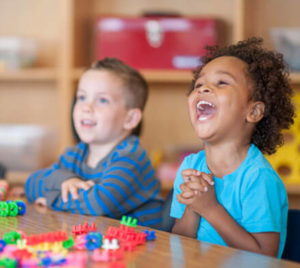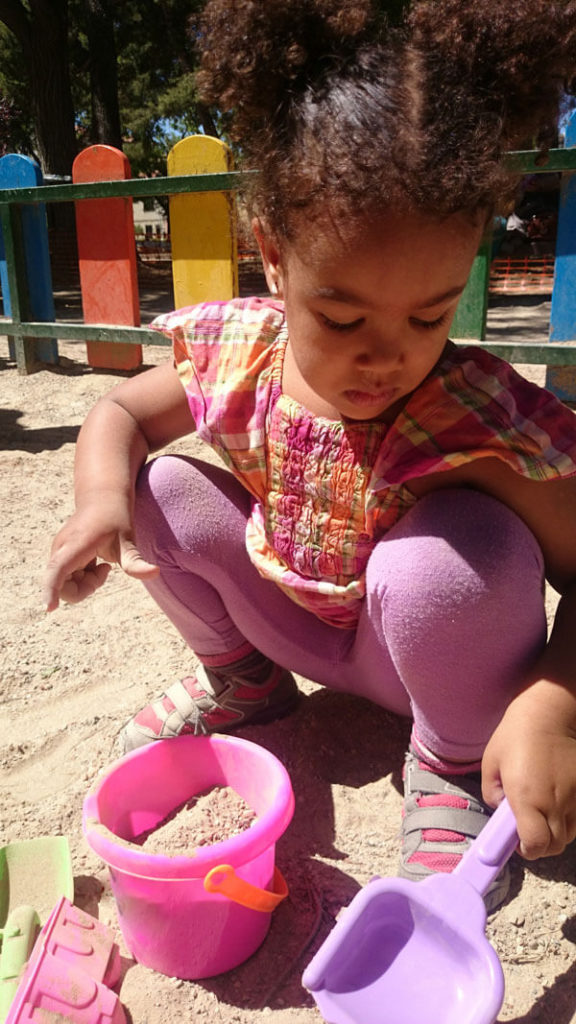
Why is self-regulation important for learning?
Self-regulation is important for your child to:
- Stay calm, focused and alert when needed.
- Organize feelings and control impulses.
- Develop the ability to tolerate frustration and resist doing something tempting (e.g., taking someone’s toy).
- Learn how to behave in different situations (e.g., screaming with joy while running outside, then sitting quietly to listen to a story).
Examples for 0 – 1 year-olds: |
You help your baby develop self-regulation by responding to his cues. Cues are signals your baby or child gives through facial expressions, body language, sounds, and crying. When you read these signals and respond to them consistently, your child will begin to learn to regulate his emotions, attention, and behaviour. Be mindful about your non-verbal language. Your baby recognizes your facial expressions.
- The baby pulls his hands to his face or tries to suck on things that touch his cheeks. This shows that he is hungry. You respond by feeding him.
- The baby is smiling at the parent playing with her. This shows that she is still interested in the game. You continue the game as long as your baby smiles and looks at you. If your baby is cooing or gurgling, smile or talk to her to let her know you are there. Your baby likes to hear your voice.
Examples for 1 – 2 year-olds: |
Toddlers still need a lot of help to regulate emotions, attention, and behaviour. Toddlers begin to read the cues from parents and respond to them.
- You may help your toddler who has to wait in line for his turn, by giving an explanation ahead of time, such as, “Your turn comes after Jake’s. Everyone gets a turn.”
- You may provide your toddler with space and learning experiences to develop his independence. Interfere only when necessary. Allow your toddler to learn, by practicing tasks over and over.
- A toddler shows a toy or book to her parents. When you show interest and look at the book with her, you encourage your toddler’s attention. In fact, looking at the same page at the same time and shifting attention from page to page is an important experience for later development. It supports your child’s ability to focus when she learns to read.
- Name the objects your child points to. Connect what she sees to something she has just experienced in real life. By doing this you are building your child’s language and giving her the attention she needs.
Examples for 2 – 5 year-olds: |
Preschoolers begin to self-regulate their emotions, behaviour, and attention. They still need help from adults, but will begin to read the cues given by others who tell them to take turns, share, wait, be friendly, calm down, focus, complete tasks, and work hard at play.
- A preschooler is showing signs of frustration because the puzzle he is working on is hard. You encourage him with a few words such as, “See if this piece fits if you turn it the other way.” He will feel happy and proud when the puzzle is finished and will stay focused on what he is doing the next time.
- A preschooler is telling a story about his day at preschool. Even though you are busy, you ask him questions about his day and listen carefully to what he has to share.
Here are some tips to help your child develop self-regulation
- Allow your child to make choices (e.g., set out two healthy snacks and let your child choose which one he wants).
- Help your child to identify and label emotions. Do this by talking about emotions when playing games, reading books or doing other daily activities.
- Provide a routine so your child knows what happens next.
- Give your child advance notice when you are changing your routine e.g.:
- “Today after school we are going grocery shopping.”
- “In five minutes we are going outside.”
- Give your child reminders before the transition will occur.
- Give directions in a calm voice to help your child with transitions. For example:
- “First you will put your shoes on and then we will go to the playground.
- “First we will go to grandma’s house and then we will play in the park.”
- Model self-control and self-regulation and talk to your child about them, e.g.
- “I am upset right now because you spilled your drink, but I am not getting angry. I am counting to ten to help myself stay calm.”
- Talk about feelings. Label the emotions for your child so he learns how to express himself when the situation arises. For example when you see your child crying because he just got hurt you can say: “I saw you got hurt and you are sad now. What can we do to make you feel better?” You may offer a hug.
A child with good self-regulation is able to:
- Communicate his needs more appropriately.
- Solve problems and complete tasks more easily.
- Use information from previous experiences to make better choices in a new situation.
- Get along well with others.
- Follow directions more easily.
These skills will help your child when he starts school.
How does a child develop self-regulation?
He learns through your loving and consistent responses and plenty of practice through play!
Why is play important for learning?
Play is the true work of a child. When children play, they learn. For example, when children are lifting, dropping, looking, pouring, bouncing, hiding, building, knocking down, climbing, running, and role playing they are learning.
Through play your child is learning important skills and concepts. Here are some examples:
- She observes when objects are put in water (for example, putting ice cubes in warm water). She talks about what she sees and what happens e.g., cause and effect (science concepts).
- She learns how to sort objects by colour, shapes, size, and use (mathematical and pattern concepts).
- She learns how to find familiar words in signs, retelling stories or printing a list (literacy skills).
- She figures out how to get along with others, making friends, and being respectful (so
 cial and emotional skills and concepts).
cial and emotional skills and concepts). - She has opportunities to develop thinking skills such as how to recognize and solve problems (inquiry skills).
- She is encouraged to walk, run, hop, throw and catch, and to practice her balance (large and small muscle development, eye-hand coordination skills).
Role playing is really important for your child. When your child role plays, she practices real life situations. Role play helps your child to build:
- Language skills.
- Social skills.
- Imagination.
- Empathy (be more likely to be kind to others).
- Higher levels of thinking and problem solving skills.
- Skills for self-regulation.
Role play is an activity that you and your child can do together. For example, you can:
- Act out a story you have read together.
- Have a tea party with dolls and teddy bears.
- Pretend to be a horse and rider.
- Pretend to go camping, shopping or any other real life experiences.
Younger children play better side-by-side than together. They learn to play with other children, but they will not always cooperate. Children often want exactly what the other child is playing with.
To help your child learn the skills needed to play well with others, provide support and guidance. For example, in a play group, you can say “Let me know when you are done playing with the toy so that another child can have a turn.” Offer another toy in exchange.
As you model how to play together, your child learns to share and to take turns.

 cial and emotional skills and concepts).
cial and emotional skills and concepts).